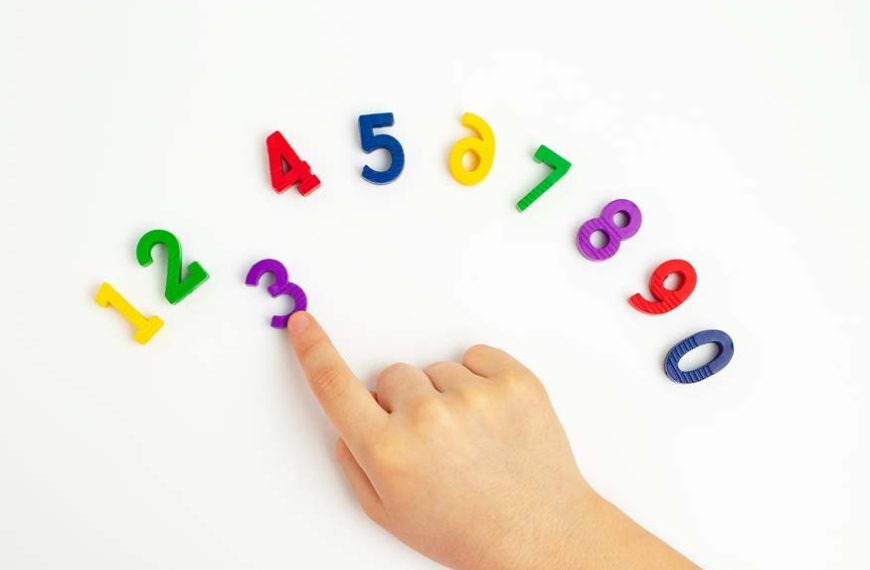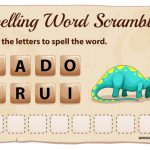Among all the things that children have to learn in school, math is often deemed among the most challenging. Of course, some kids have a natural affinity towards numbers, but the same cannot be said for everyone. A lot of kids struggle with understanding the basic concepts of math, which can result in them falling behind their classmates and losing confidence in their abilities while growing up.
Thus, it is a collective responsibility of kindergarten teachers, parents, and educational institutions to devise strategies and foster an environment where learning math becomes easy, accessible and equally exciting. Among the various lessons in Math for kindergartens, number formation stands out. In this blog, we will check out some interesting number formation activities, how to teach numbers to kids, the importance of teaching numbers, and more.
Objectives of Teaching Numbers to Kids – A Crisp Overview
Learning to work with numbers is a sure-shot way for young kids to improve their cognitive skills and problem-solving abilities, enhance attention and concentration and polish their coordination and fine motor skills. Math and numbers can also help children get a more intense understanding of the world. Likewise, rudimentary math exercises, such as number formation, can prepare kids to learn about vast and complex topics like measurements, fractions, equations, proportions, ratios, percentages, and more, in the near future.
What is Number Formation?
Simply put, number formation refers to the correct path that a student’s pencil takes when they are writing numbers. For instance, the number one starts at the top and goes downward in a straight line. Learning correct number formation is vital for young children to be able to recall this crucial information automatically without thinking about it when writing down numbers. Now that we know what is number formation, let us delve further into the topic.
Importance of Teaching Number Formation to Kids
For starters, students with poor number formation can end up suffering vis-a-vis their academic performance. Kids who form numbers poorly may be marked down in their math lesson, irrespective of the exercise being on a test or worksheet. This happens because teachers are unable to grasp what number the child has written down. However, this does not automatically imply that the child is weak in math, as they might be able to confidently solve the problem out aloud. But, the challenge arises when the answer that has been written down is not formed correctly and hence, does not receive optimal marks.
Secondly, good number formation is pivotal for speed. Tests always have a time limit and students must confidently answer the set amount of questions in a stipulated time period. The ability to write numbers automatically implies that the child’s brain is free to focus on the content of what they are doing, as opposed to forming the number. Thus, the child is able to answer questions on a test quicker than someone who has poor number formation and needs to think about how to write numbers as they go.
How to Teach Numbers to Kids: The Give Number Formation Activities
- Use Music and Movement
- Play Guess the Number
- Get Hands on Experience with Number Counting
- Devise a Number Scavenger Hunt
- Opt for Interactive Apps and Games
- Create a Homemade Number Book
One of the best number formation activities is to add some music and rhythm to the math classes by incorporating songs and dances into the lessons. There are an array of children’s songs that focus on numbers and counting. So, you can tune in some of these fun and peppy songs and get moving.
Guess the Number is a classic game that is ideal for learning numbers, number formation and estimation. To play the game, one person thinks of a number between 1 and 10. The other players then take turns asking questions that can only be answered with a yes or no, in order to try to guess the number.
Quite understandably, one of the best ways for children to learn is by experiencing it firsthand. So, when you are trying to teach concepts, such as number formation, basic tricks that enable touch and feel can go a long way. For instance, you can provide them anything – from small toys to toffees and more. As the child counts each object and forms a number, have them line up the objects in a row so that they can see how many they have altogether.
Another fun and exciting number formation activity that can be played indoors and outdoors is the scavenger hunt. To set up the premise, you have to simply hide small pieces of paper around the room or your home. Then, on each individual piece of paper, you have to write a different number.
Thereafter, you have to provide your child a bag or basket and allow them to go on a scavenger hunt to find all the numbers. Once they have found all the numbers, help them count and form the numbers.
You can find an array of interactive games and apps that can help your child learn numbers and number formations. These apps can be used on your phone, tablets, or computer, and hence, are the ideal platform from which kids can learn and reinforce number concepts in a fun and engaging way.
Last but not least, you can create your very own number book from where children can grasp more about counting, simple addition and subtraction. To make your number activity book, you would need some paper, scissors and glue. Start the process by folding the paper in half lengthwise to create a long rectangle.
Then, cut the rectangle into thirds so that you have three long strips of paper. Then, fold each strip of paper half widthwise to create a short rectangle. After your rectangles are folded, it is time to decorate them. On each rectangle, you can draw or glue a different number. Then, on the inside of the rectangle, you can write a simple math equation that leverages the number on the front.
So, there we have it, a crisp overview of what number formation is, the importance of teaching children numbers and math, and the six best activities to ace the number’s game. For more information on preschool admission, Visit EuroKids website.















